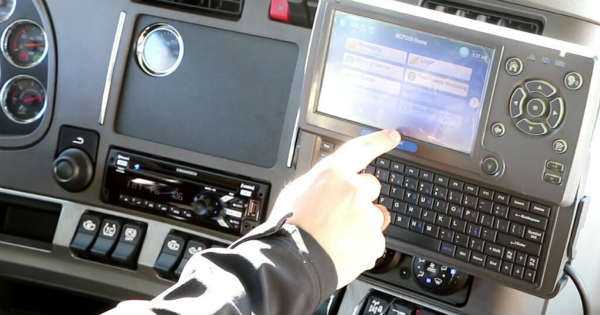The recent ELD Mandate – which comes into force on December 16th, 2019 – means massive changes to commercial fleets. This includes trucks, buses, and any other commercial vehicles that are required by law to record a driver`s hours of service. The mandate originally came into force in 2017 when it became law for drivers to keep a Record of Duty Status and to have an Electronic Logging Device (ELD) installed.

However, as many fleets already had logging devices in use in the shape of Automatic On-Board Recording Devices (AOBRD), those were given an additional two years to switch to ELDs. There will be no further extension of the deadline, so you need to get working fast if you have yet to make the switch.
Many people have questioned why the change is necessary, and ask what the specific differences between AOBRD and ELD are. That`s what we`re here to talk about, so let`s start with a bit about AOBRD.
What is AOBRD?
An AOBRD is an electronic recording device that is designed to keep track of a driver`s hours and make sure he or she is complying with the law regarding hours of service. However, these devices are quite basic – and were not designed to be compliant with any particular regulations – and were, at first, not a legal requirement.
The AOBRD did its job; it was able to keep track of a driver`s hours and so forth, but it is limited in its scope. It also allowed for errors to be corrected without any reference; in other words, a driver`s hours or destination – if entered incorrectly – could be amended, and nobody would ever know.
Using an AOBRD, a driver is obliged to enter his or her location on arrival. There is no GPS ability. Hence the information could be far from accurate. The potential problems with these systems are, therefore, clear to see, so let`s check out the ELD, and what it does differently.
What is ELD?
The first thing to explain is that an ELD – to be legal – must comply with a directive that governs the use of electronic recording devices; the AOBRD is not compliant with this. You can find a more detailed explanation at https://bestelddevices.org/aobrd-vs-eld/, but we will summarise the main points below.
An ELD is required to perform the following: monitor the movement of the vehicle, keep check on its engine usage hours, record the hours and miles driven by a driver, and record duty status. All of this is now a legal requirement, and every ELD will offer these functions.
When a driver logs into the ELD, they will be given a warning if they are outside their hours of duty or permitted mileage or hours. The ELD also incorporates GPS, so while it tracks the engine hours, it also keeps an eye on where the vehicle is at any given time. Trucks straying from their assigned route will, therefore, be easy to spot.
Further requirements include the ELD reporting on an hourly basis on the movement of the vehicle, whether it is in commercial or personal use, it`s engine hours and on or off changes, and duty status of the driver. Among the other requirements of the mandate is one that senses if a vehicle has been stationary for 5 minutes.
If it has, the driver is prompted by a message to change duty status from `Driving` to `On Duty.` The ELD will automatically make the change should the driver not do so within one minute of the notification. An AOBRD has no means of automated changes, as everything must be entered manually.
The Benefits of ELD
From the above, you should get a good idea of why the mandate has come about: previously, hours and mileage covered were logged into an inaccurate system that required manual operation, and that had no way of knowing where the truck or vehicle was at any time.
The AOBRD was also open to errors that could be manually corrected with no records – an ELD automatically records any alterations or corrections made to data.
The ELD provides far more information in real-time, can track the location of a vehicle, and many offer aa lot more than the basic operations required by the mandate, so make sure you have your fleet or truck equipped adequately by the December 16th deadline.

